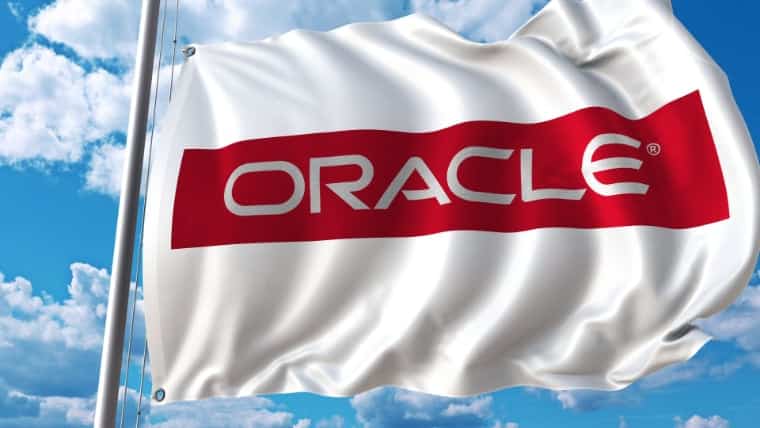The News: Oracle unveiled new Oracle Cloud Infrastructure (OCI) and Oracle Database capabilities, readied for the company’s CloudWorld Tour 2023. The new capabilities are designed to make it easier to migrate to OCI, secure critical workloads, and distribute content. Read the Oracle blog here.
Oracle Cloud Infrastructure: New Features and Database Portfolio Capabilities Boost Market Momentum
Analyst Take: Oracle Cloud Infrastructure introduced new capabilities aimed at easing migration to OCI in accord with new Oracle Database features that target streamlining modern data-driven application development as well as expansion of machine learning (ML) capabilities in Oracle MySQL HeatWave, including unsupervised anomaly detection and recommender systems.
Starting in May 2023, OCI customers can migrate virtual machines (VMs) from Amazon Web Services (AWS) to OCI, following on existing OCI support for VMware VM migration. The service has no management fee, although the VM conversion process incurs a resource charge. With the new service, OCI is clearly targeting streamlining the ability of AWS customers to adopt OCI, with the strategic objective of improving their overall multi-cloud strategy and capabilities.
The new OCI features also include the May 31 general availability of the OCI Content Delivery Network (CDN) platform which will start by offering endpoints in 150 countries. From my view, the new OCI CDN platform can provide a formidable competitive alternative to established CDNs such as Akamai and Cloudflare. I find OCI’s targeting of the CDN market segment sensible since the global CDN market is expected to generate an impressive 23.0% compound annual growth rate (CAGR) from 2022 through 2030, expanding from a market size value of $18.18 billion in 2022 to a forecasted market size value of $95.37 billion in 2030 (according to Grand View Research). I identify key drivers as including the swift expansion of data volumes being exchanged across CDN fabrics and the sustained growth of high-speed network rollouts (e.g., 5G, fiber, zettabyte data centers).
Moreover, OCI is now directly targeting the confidential computing segment by offering availability of OCI Compute shapes with AMD, including E4 Flex, E4 Bare Metal Standard, and E3 Bare Metal Standard, using AMD Secure Encrypted Virtualization (SEV) and AMD Secure Memory Encryption (SME). I anticipate that confidential computing will gain greater traction and influence across cloud ecosystems since the technology protects data in use by performing computation in a hardware-trusted Trusted Execution Environment (TEE).
Such secure and isolated environments are designed to prevent unauthorized access or alteration of data and applications while it is in use in memory, increasing the security levels of organizations that administer sensitive and regulated data, such as Personally Identifiable Information (PII), patient healthcare profiles, and financial data. As a result, I expected that tightly regulated industries, where Oracle and OCI have an extensive presence, such as banking, defense, finance, healthcare, insurance, and public sector, will accelerate near-term uptake of confidential computing.
Further augmenting the new OCI features are the Oracle Database 23c Free – Developer Release and new MySQL HeatWave capabilities. Oracle Database 23c Free gives developers complimentary access to Oracle Database application and development features, such as JSON Relational Duality, SQL Support for Graph queries directly on OLTO data, and JavaScript Stored Procedures.
The new MySQL HeatWave capabilities for ML and multi-cloud target providing more ML use cases for MySQL HeatWave AutoML including multivariate time series forecasting, unsupervised anomaly detection, and recommender systems, while a new interactive AutoML console is aimed at enabling business analysts to build, train, run, and explain ML models. MySQL HeatWave on OCI now offers a streamlined 32GB entry-level shape and improved price-performance for larger workloads (Analysis of price performance benefits are analyzed in my Oracle Unleashes New Set of MySQL HeatWave AutoML Innovations piece).
Key Takeaways: OCI Adds New Features
Taken together, I believe the new OCI features further strengthen Oracle’s expectation that the company’s cloud computing portfolio can attain an annual run rate of over $20 billion in fiscal year 2023, building on Oracle’s cloud businesses exceeding $16 billion in annualized revenue, including the addition of almost 1,000 paying cloud customers, during fiscal Q3 2023. In fact, total fiscal Q3 2023 cloud revenue, consisting of SaaS plus IaaS including Cerner, produced $4.1 billion, up 48% in constant currency.
Overall, I anticipate the new cloud migration, workload security, and CDN features in alignment with Oracle Database portfolio enhancements, can reinforce OCI’s key value proposition of right sizing workloads according to specific customer requirements, moving the data industry away from predetermined inflexible workload parameters imposed by major providers.
Disclosure: The Futurum Group is a research and advisory firm that engages or has engaged in research, analysis, and advisory services with many technology companies, including those mentioned in this article. The author does not hold any equity positions with any company mentioned in this article.
Analysis and opinions expressed herein are specific to the analyst individually and data and other information that might have been provided for validation, not those of The Futurum Group as a whole.
Other insights from The Futurum Group:
Oracle Cloud Infrastructure Doubles Down on Kubernetes with Oracle Container Engine for Kubernetes
Oracle Revenue Rises to $12.4B in Q3 2023, up 18% YoY
Red Hat and Oracle Strengthen Relationship: Red Hat Enterprise Linux Now Runs on OCI
Author Information
Ron is an experienced, customer-focused research expert and analyst, with over 20 years of experience in the digital and IT transformation markets, working with businesses to drive consistent revenue and sales growth.
He is a recognized authority at tracking the evolution of and identifying the key disruptive trends within the service enablement ecosystem, including a wide range of topics across software and services, infrastructure, 5G communications, Internet of Things (IoT), Artificial Intelligence (AI), analytics, security, cloud computing, revenue management, and regulatory issues.
Prior to his work with The Futurum Group, Ron worked with GlobalData Technology creating syndicated and custom research across a wide variety of technical fields. His work with Current Analysis focused on the broadband and service provider infrastructure markets.
Ron holds a Master of Arts in Public Policy from University of Nevada — Las Vegas and a Bachelor of Arts in political science/government from William and Mary.




